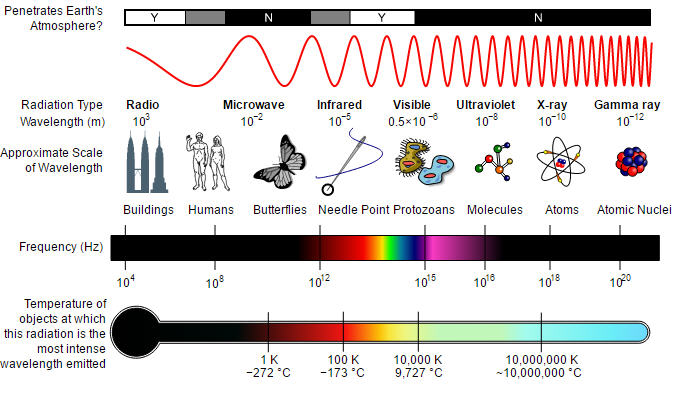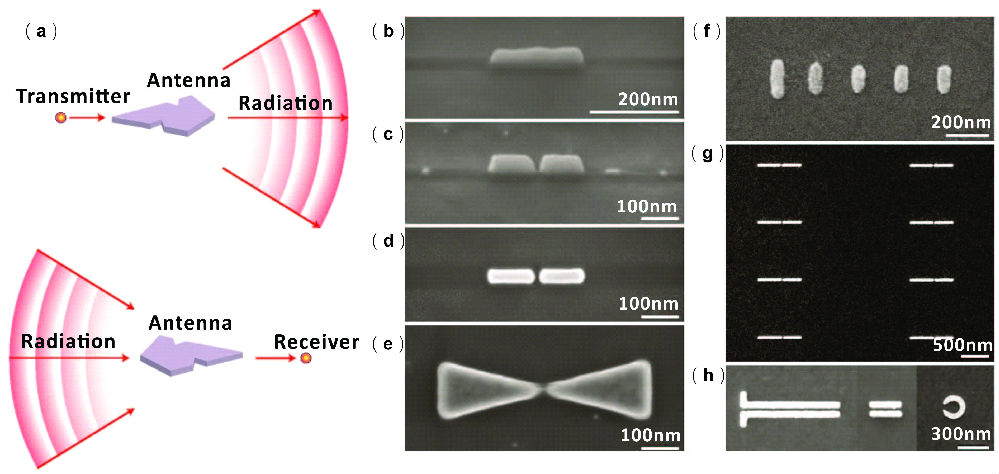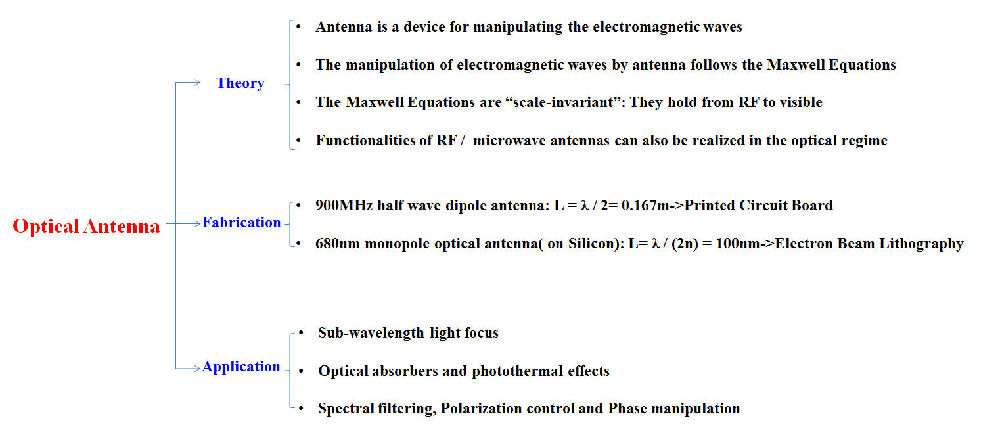 精选
精选
Antenna,according to Wikipedia,"is a device which transmit or receive radio waves, or more generally speaking, electromagnetic wave". For example, in wireless communication systems,antennas are used to transmit and receive radiowave or microwave signals. In our smartphones, there are integrated Planar Inverted-F Antennas (PIFA) receiving and transmitting 2.4GHz and 5GHz electromagnetic wave signals.

Dipole antenna
Since the manipulation of electromagnetic waves by antennas follows the Maxwell Equations,which are scale invariant,functionalities of radiowave and microwave antennas such as frequency selective surface and phased array antenna,can also be realized in optical regime[1].

Maxwell Equations are scale-invariant
The length of the antenna is linearly related to its working wavelength. Taking a simple half-wavelength dipole antenna as an example,it is formed by two quarter wavelength monopole antennas. An RF dipole antenna working at 900MHz,there has a length L = λ / 2= (3e8 m/s / 900e6 /s) /2 = 0.167m。An antenna working in the optical regime has a length L = λ /(2n),where n is the refractive index of the surrounding dielectrics[2]. For an optical antenna working at 680nm (red light), the length L = λ / (2n)= 680 nm / 2 / 3.4 = 100 nm, assuming the antenna is fabricated on silicon. Therefore, the experimental research on optical antennas relies on nanotechnologies to make such small structures that are comparable to optical wavelengths.

Thanks to the advancement of "top-down" nanofabrication tools such as Electron Beam Lithography and Focused Ion Beam Lithography,fabrication metal and dielectric nanostructures that are comparable to optical wavelengths is now possible. The research on optical antenna is then burgeoning[3].

The researches on optical antennas are growing fast. Here we only give a very brief summary:
1. Sub-wavelegnth light focus:Optical atennas can localize the freely propagating optical waves into a subwavelength space at the surface of the antennas,significantly increasing the optical power density, and therefore are used to break the diffraction limit[4],and enhance the nanoscale light-matter interaction[5].
2. Optical absorbers and photothermal effects:The materials for optical antennas can be metals used for microwave antennas,such as gold, silver, aluminium and copper。However,in optical regime, these metals are no longer perfect conductors as they are in the microwave regime.Instead, they are very lossy to optical waves, i.e., the imaginary part k of their refractive indices is comparable to the real part n. This feature significantly increases the loss of the optical antennas to the electromagnetic waves and enable the use of optical antennas as optical absorbers[6,7].Eventually, the electromagnetic energy absorbed by the optical antenna is dissipated as heat and consequently increase the temperature of the antenna[8].The photothermal effects of optical antennas are applied to thermal infrared detectors[9,10],thermal photovoltaic[11] and photothermal cancer therapy[12,13].
3. Spectral filtering, Polarization control and Phase manipulation: Optical antennas in the form of an array, has many novel features[14]. As mentioned before,the concepts of Frequency Selective Surface and Phased Array Antenna in microwave regime can also be applied to the optical regime to achieve optical spectral filtering, polarization control and phase manipulation. For example, in the latest Science cover paper,optical metasurface based on nanoantenna array can manipulate the geometric phase of a circularly polarized plane wave, thus enabling a planar lense in the visible regime. Therefore,it can be expected that carefully designed optical nanoantenna array can shrink the functionalities of the conventional optics such as spectral filters, polarizers and imaging lenses using optical thin films, leading to the so called Flat Optics[15,16].
《Science》cover paper:“Meta-lense”
The researches on optical antennas are burgeoning. This paper is only a very brief introduction in the hope of bringing more deep discussions on this topic.
We finally use a figure summarizing the concept of optical antennas:

References:
L. Novotny, and N. van Hulst, "Antennas for light," Nature Photonics 5, 83-90 (2011).
N. Yu, and F. Capasso, "Flat optics with designer metasurfaces," Nat Mater 13, 139-150 (2014).
(When citing this blog, please direct to the link on the sciencenet.cn: http://blog.sciencenet.cn/blog-872178-991572.htm)
转载本文请联系原作者获取授权,同时请注明本文来自易飞科学网博客。
链接地址:https://wap.sciencenet.cn/blog-872178-991572.html?mobile=1
收藏


